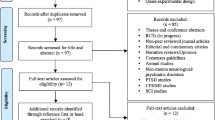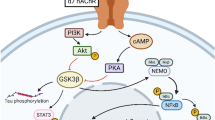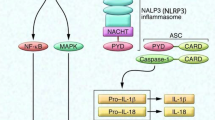Abstract
Purpose of Review
Mild traumatic brain injury (mTBI) is a continuing healthcare concern worldwide contributing to significant cognitive and neurological impairment, consequently affecting activities of daily living. While mTBI recovery is becoming well studied, there are no interventions to reduce the known impairments of mTBI. Omega-3 fatty acids (N-3FA) are safe and beneficial for brain health; however, their potential effects in a pathophysiological environment such as that seen post-mTBI are unknown.
Recent Findings
Preclinical studies using rodent models are key to understanding molecular mechanisms underlying improvements post-injury. Studies to date have shown improved outcomes in rodent models following mTBI protocols, but these data have not been quantified using a systematic review and meta-analysis approach.
Summary
Our systematic review assessed 291 studies identified from the literature. Of these studies, 18 studies met inclusion criteria. We conducted a meta-analysis examining the effect of high-dose n-3FA vs placebo on neurological, cognitive and molecular changes following mTBI. Quality of studies was rated as moderate to high quality, and while mostly compliant, some areas of risk of bias were identified. Results showed that preclinical doses of 10–370 mg/kg/day of n-3FA per day in rodents (equivalent to high clinical doses) resulted in improvements in neurological and cognitive performance (pooled effect sizes ranging between 1.52 and 3.55). Similarly, improvements in molecular and inflammatory markers were observed in treated rodents vs control (pooled effect sizes: 3.73–6.55). Overall, these findings highlight the potential for high-dose n-3FA for human clinical studies following mTBI.







Similar content being viewed by others
Data Availability
Data is available upon reasonable request.
References
Papers of particular interest, published recently, have been highlighted as: • Of importance •• Of major importance
McInnes K, Friesen CL, MacKenzie DE, Westwood DA, Boe SG. Mild traumatic brain injury (mTBI) and chronic cognitive impairment: a scoping review. PLoS One. 2017;12(4):e0174847.
Alexander MP. Mild traumatic brain injury. Pathophysiology, natural history, and clinical management. Neurology. 1995;45(7):1253–60.
Yue JK, Upadhyayula PS, Avalos LN, Phelps RRL, Suen CG, Cage TA. Concussion and mild-traumatic brain injury in rural settings: epidemiology and specific health care considerations. J Neurosci Rural Pract. 2020;11(1):23–33.
Langlois JA, Rutland-Brown W, Wald MM. The epidemiology and impact of traumatic brain injury: a brief overview. J Head Trauma Rehabil. 2006;21(5):375–8.
Finch CF, Clapperton AJ, McCrory P. Increasing incidence of hospitalisation for sport-related concussion in Victoria, Australia. Med J Aust. 2013;198(8):427–30.
Faul M, Xu L, Wald MM, Coronado VG. Traumatic brain injury in the United States: emergency department visits, hospitalizations, and deaths 2002–2006. Atlanta, GA: US Department of Health and Human Services, CDC; 2010.
Wang K, Cui D, Gao L. Traumatic brain injury: a review of characteristics, molecular basis and management. Front Biosci. 2016;21:890–9.
McCrory P, Meeuwisse W, Dvorak J, Aubry M, Bailes J, Broglio S, et al. Consensus statement on concussion in sport—the 5th international conference on concussion in sport held in Berlin, October 2016. Brit J Sport Med. 2017;51:838–47.
Dimou S, Lagopoulos J. Toward objective markers of concussion in sport: a review of white matter and neurometabolic changes in the brain after sports-related concussion. J Neurotrauma. 2014;31(5):413–24.
Giza CC, Hovda DA. The neurometabolic cascade of concussion. J Athl Train. 2001;36(3):228–35.
Giza CC, Hovda DA. The new neurometabolic cascade of concussion. Neurosurgery. 2014;75(suppl_4):S24–33.
Romeu-Mejia R, Giza CC, Goldman JT. Concussion pathophysiology and injury biomechanics. Curr Rev Musculoskelet Med. 2019;12(2):105–16.
Kara S, Crosswell H, Forch K, Cavadino A, McGeown J, Fulcher M. Less than half of patients recover within 2 weeks of injury after a sports-related mild traumatic brain injury: a 2-year prospective study. Clin J Sport Med. 2020;30(2):96–101.
Alosco ML, Tripodis Y, Baucom ZH, Mez J, Stein TD, Martin B, et al. The late contributions of repetitive head impacts and tbi to depression symptoms and cognition. Neurology. 2020;95(7):e793–804.
Livingston G, Huntley J, Sommerlad A, Ames D, Ballard C, Banerjee S, et al. Dementia prevention, intervention, and care: 2020 report of the Lancet Commission. Lancet. 2020;396(10248):413–46.
Barnes DE, Kaup A, Kirby KA, Byers AL, Diaz-Arrastia R, Yaffe K. Traumatic brain injury and risk of dementia in older veterans. Neurology. 2014;83(4):312–9.
Gardner RC, Yaffe K. Epidemiology of mild traumatic brain injury and neurodegenerative disease. Mol Cell Neurosci. 2015;66:75–80.
Rabinowitz AR, Li X, McCauley SR, Wilde EA, Barnes A, Hanten G, et al. Prevalence and predictors of poor recovery from mild traumatic brain injury. J Neurotrauma. 2015;32(19):1488–96.
Guskiewicz KM, Marshall SW, Bailes J, McCrea M, Cantu RC, Randolph C, et al. Association between recurrent concussion and late-life cognitive impairment in retired professional football players. Neurosurgery. 2005;57(4):719–26.
Lehman EJ, Hein MJ, Baron SL, Gersic CM. Neurodegenerative causes of death among retired National Football League players. Neurology. 2012;79(19):1970–4.
Mackay DF, Russell ER, Stewart K, MacLean JA, Pell JP, Stewart W. Neurodegenerative disease mortality among former professional soccer players. N Engl J Med. 2019;381:1801–8.
Mcgeown JP, Hume PA, Theadom A, Quarrie KL, Borotkanics R. Nutritional interventions to improve neurophysiological impairments following traumatic brain injury: a systematic review. J Neurosci Res. 2021;99(2):573–603 The authors systematically reviewed the literature and show that n-3 FAs have shown the most promising pre-clinical results for altering neurophysiological outcomes following traumatic brain injury. Our study confirms that no clinical studies have yet been conducted in not only cognitive and neurological outcomes but also neurophysiological.
Lewis M, Ghassemi P, Hibbeln J. Therapeutic use of omega-3 fatty acids in severe head trauma. Am J Emerg Med. 2013;31(1):273. e5–8.
Gomez-Pinilla F. The combined effects of exercise and foods in preventing neurological and cognitive disorders. Prev Med. 2011;52:S75–80.
Patch C, Hill-Yardin E, Ryan L, Daly E, Pearce AJ. Long chain omega-3 fatty acid intervention in ageing adults at risk of dementia following repeated head trauma. Low-level support or an opportunity for an unanswered question? J Prev Alzheimers Dis. 2021;8(1):29–32 This systematic review demonstrated that there are currently no studies that have employed n-3 FAs in humans with post-concussion syndrome. The study suggests that pre-clinical animal data is strong enough to take n-3 FA to trials in humans suffering from post-concussion syndrome.
Moher D, Shamseer L, Clarke M, Ghersi D, Liberati A, Petticrew M, et al. Preferred reporting items for systematic review and meta-analysis protocols (PRISMA-P) 2015 statement. Syst Rev. 2015;4:1.
Wright RW, Brand RA, Dunn W, Spindler KP. How to write a systematic review. Clin Orthop Relat Res. 2007;455:23–9.
Percie du Sert N, Ahluwalia A, Alam S, Avey MT, Baker M, Browne WJ, et al. Reporting animal research: explanation and elaboration for the ARRIVE guidelines 2.0. PLoS Biol. 2020;18(7):e3000411.
Percie du Sert N, Hurst V, Ahluwalia A, Alam S, Avey MT, Baker M, et al. The ARRIVE guidelines 2.0: updated guidelines for reporting animal research. J Cereb Blood Flow Metab. 2020;40(9):1769–77.
Higgins JP, Altman DG, Gøtzsche PC, Jüni P, Moher D, Oxman AD, et al. The Cochrane Collaboration’s tool for assessing risk of bias in randomised trials. Brit Med J. 2011;343:d5928.
Bailes JE, Mills JD. Docosahexaenoic acid reduces traumatic axonal injury in a rodent head injury model. J Neurotrauma. 2010;27(9):1617–24.
Begum G, Yan HQ, Li L, Singh A, Dixon CE, Sun D. Docosahexaenoic acid reduces ER stress and abnormal protein accumulation and improves neuronal function following traumatic brain injury. J Neurosci Off J Soc Neurosci. 2014;34(10):3743–55.
Chen X, Wu S, Chen C, Xie B, Fang Z, Hu W, et al. Omega-3 polyunsaturated fatty acid supplementation attenuates microglial-induced inflammation by inhibiting the HMGB1/TLR4/NF-κB pathway following experimental traumatic brain injury. J Neuroinflammation. 2017;14(1):1–12.
Chen X, Chen C, Fan S, Wu S, Yang F, Fang Z, et al. Omega-3 polyunsaturated fatty acid attenuates the inflammatory response by modulating microglia polarization through SIRT1-mediated deacetylation of the HMGB1/NF-κB pathway following experimental traumatic brain injury. J Neuroinflammation. 2018;15(1):1–15.
Chen X, Pan Z, Fang Z, Lin W, Wu S, Yang F, et al. Omega-3 polyunsaturated fatty acid attenuates traumatic brain injury-induced neuronal apoptosis by inducing autophagy through the upregulation of SIRT1-mediated deacetylation of Beclin-1. J Neuroinflammation. 2018;15(1):1–15.
Ghazale H, Ramadan N, Mantash S, Zibara K, El-Sitt S, Darwish H, et al. Docosahexaenoic acid (DHA) enhances the therapeutic potential of neonatal neural stem cell transplantation post—Traumatic brain injury. Behav Brain Res. 2018;340:1–13.
Harvey LD, Yin Y, Attarwala IY, Begum G, Deng J, Yan HQ, et al. Administration of DHA reduces endoplasmic reticulum stress-associated inflammation and alters microglial or macrophage activation in traumatic brain injury. ASN Neuro. 2015;7(6):1759091415618969.
Lin C, Chao H, Li Z, Xu X, Liu Y, Bao Z, et al. Omega-3 fatty acids regulate NLRP3 inflammasome activation and prevent behavior deficits after traumatic brain injury. Exp Neurol. 2017;290:115–22.
Lucke-Wold BP, Turner RC, Logsdon AF, Nguyen L, Bailes JE, Lee JM, et al. Endoplasmic reticulum stress implicated in chronic traumatic encephalopathy. J Neurosurg. 2016;124(3):687–702.
Mills JD, Bailes JE, Sedney CL, Hutchins H, Sears B. Omega-3 fatty acid supplementation and reduction of traumatic axonal injury in a rodent head injury model. J Neurosurg. 2011;114(1):77–84.
Pu H, Jiang X, Wei Z, Hong D, Hassan S, Zhang W, et al. Repetitive and prolonged omega-3 fatty acid treatment after traumatic brain injury enhances long-term tissue restoration and cognitive recovery. Cell Transplant. 2017;26(4):555–69.
Tang R, Lin YM, Liu HX, Wang ES. Neuroprotective effect of docosahexaenoic acid in rat traumatic brain injury model via regulation of TLR4/NF-Kappa B signaling pathway. Int J Biochem Cell Biol. 2018;99:64–71.
Thau-Zuchman O, Gomes RN, Dyall SC, Davies M, Priestley JV, Groenendijk M, et al. Brain phospholipid precursors administered post-injury reduce tissue damage and improve neurological outcome in experimental traumatic brain injury. J Neurotrauma. 2019;36(1):25–42 This study in pre-clinical models demonstrated that n−3 FA treatment led to a significantly improved sensorimotor outcome and cognition and reduced lesion size and oligodendrocyte loss, and it restored myelin. It decreased microglia activation and the rise in ß-amyloid precursor protein and restored depressed neurogenesis resulting from TBI.
Wu A, Ying Z, Gomez-Pinilla F. The salutary effects of DHA dietary supplementation on cognition, neuroplasticity, and membrane homeostasis after brain trauma. J Neurotrauma. 2011;28:2113–22.
Wu A, Ying Z, Gomez-Pinilla F. Dietary strategy to repair plasma membrane after brain trauma: implications for plasticity and cognition. Neurorehabil Neural Repair. 2014;28(1):75–84.
Yin Y, Li E, Sun G, Yan HQ, Foley LM, Andrzejczuk LA, et al. Effects of DHA on hippocampal autophagy and lysosome function after traumatic brain injury. Mol Neurobiol. 2018;55(3):2454–70.
Zhu W, Chi N, Zou P, Chen H, Tang G, Zhao W. Effect of docosahexaenoic acid on traumatic brain injury in rats. Exp Ther Med. 2017;14(5):4411–6.
Zhu W, Ding Y, Kong W, Li T, Chen H. Docosahexaenoic acid (DHA) provides neuroprotection in traumatic brain injury models via activating Nrf2-ARE signaling. Inflammation. 2018;41(4):1182–93.
Rohatgi A. WebPlotDigitizer: Version 4.2. https://automeris.io/WebPlotDigitizer/citation.html. 2019.
Borenstein M, Hedges LV, Higgins JP, Rothstein HR. A basic introduction to fixed-effect and random-effects models for meta-analysis. Res Synth Methods. 2010;1(2):97–111.
Cohen J. Statistical Power Analysis for the Behavioral Sciences. Hillsdale: Erlbaum; 1988.
Higgins JP, Thompson SG, Deeks JJ, Altman DG. Measuring inconsistency in meta-analyses. Brit Med J. 2003;327(7414):557–60.
Germano AF, Dixon CE, d ' Avella D, Hayes RL, Tomasello F. Behavioral deficits following experimental subarachnoid hemorrhage in the rat. J Neurotrauma. 1994;11(3):345–53.
Morris RG. Spatial localization does not require the presence of local cues. Learn Motiv. 1981;12(2):239–60.
Crawley JN. Behavioral phenotyping of rodents. Comp Med. 2003;53(2):140–6.
Goldstein LB, Davis JN. Beam-walking in rats: studies towards developing an animal model of functional recovery after brain injury. J Neurosci Methods. 1990;31(2):101–7.
Bailes JE, Patel V. The potential for DHA to mitigate mild traumatic brain injury. Mil Med. 2014;179(11):112–6.
Nair A, Morsy MA, Jacob S. Dose translation between laboratory animals and human in preclinical and clinical phases of drug development. Drug Dev Res. 2018;79(8):373–82.
Author information
Authors and Affiliations
Contributions
CSP, EYH and AJP conceived the study. AJP completed the data analysis. CSP, EYH and AJP contributed to the writing of the manuscript. All authors contributed to the review and editorial suggestions for the writing of the manuscript.
Corresponding author
Ethics declarations
Ethics Approval
No ethics approval was required to undertake this systematic review.
Consent to Participate
N/A
Consent for Publication
N/A
Conflict of Interest
AJP currently receives partial research salary funding from Sports Health Check charity (Australia) and Erasmus+ strategic partnerships program (2019-1-IE01-KA202-051555). AJP has previously received partial research funding from the Australian Football League, Impact Technologies Inc., and Samsung Corporation, and has provided expert reports in concussion legal proceedings. CSP is Director of Feedback Nutrition Pty Ltd which sells and markets a DHA supplement is a shareholder and Non-Executive Director of Sea Dragon Ltd which sells and markets DHA tuna oil ingredients for the food and infant formula market. ML is a medical advisor to Nordic Naturals, Inc. No other author has any declaration of interest.
Human and Animal Rights and Informed Consent
This article does not contain any studies with human or animal subjects performed by any of the authors.
Additional information
Publisher’s Note
Springer Nature remains neutral with regard to jurisdictional claims in published maps and institutional affiliations.
This article is parts of the Topical Collection on Neurotrauma
Rights and permissions
About this article
Cite this article
Patch, C.S., Hill-Yardin, E.L., Lewis, M. et al. The More, the Better: High-Dose Omega-3 Fatty Acids Improve Behavioural and Molecular Outcomes in Preclinical Models in Mild Brain Injury. Curr Neurol Neurosci Rep 21, 45 (2021). https://doi.org/10.1007/s11910-021-01132-z
Accepted:
Published:
DOI: https://doi.org/10.1007/s11910-021-01132-z




